Copyright 2013 by Philip Striano, DC, and Lisa Purcell Photos Copyright 2010 by Jonathan Conklin Photography, Inc. Produced for Skyhorse Publishing by Moseley Road, Inc. (www.moseleyroad.com) All Rights Reserved. No part of this book may be reproduced in any manner without the express written consent of the publisher, except in the case of brief excerpts in critical reviews or articles. All inquiries should be addressed to Skyhorse Publishing, 307 West 36th Street, 11th Floor, New York, NY 10018. Skyhorse Publishing books may be purchased in bulk at special discounts for sales promotion, corporate gifts, fund-raising, or educational purposes.
Special editions can also be created to specifications. For details, contact the Special Sales Department, Skyhorse Publishing, 307 West 36th Street, 11th Floor, New York, NY 10018 or . Skyhorse and Skyhorse Publishing are registered trademarks of Skyhorse Publishing, Inc., a Delaware corporation. www.skyhorsepublishing.com 10 9 8 7 6 5 4 3 2 1 Library of Congress Cataloging-in-Publication Data is available on file. ISBN: 978-1-62873-636-6 Printed in China CONTENTS  INTRODUCTION: WHY RUN A MARATHON? R unning and jogging are among the most popular recreational sports in the world. And thousands of competitors from around the globe sign up for marathons every year.
INTRODUCTION: WHY RUN A MARATHON? R unning and jogging are among the most popular recreational sports in the world. And thousands of competitors from around the globe sign up for marathons every year.
So why do so many people from diverse backgrounds choose to run? Of course, each individual has unique motivations, but there are several goals shared by many runners, from a desire to lose weight to a need to lower blood pressure and strengthen the heart. From there, they develop a passion for running that takes them to the streets, whether a local competition or one of the big events, such as the London, Boston, Paris, or New York marathons. Running is also a versatile way to get fityou can run just about anytime and anywhere, and it is a relatively inexpensive sport. It doesnt require pricey health club memberships or personal training fees, and even the major marathons are still relatively affordable. With little more than the right pair of shoes, anyone of just about any age and fitness level can start a training program, and eventually run marathons. Yet, as with any physical activity, there is a right way and a wrong way to rundont expect to just lace up your running shoes and hit the pavement.
You should also prepare for and augment your runs with stretches and exercises geared to warming you up before a run and cooling you down after it, and perform strengthening and stability exercises that target the key muscles used in running. Take the time to learn how to run right, using the guidelines found in the following pages, and youll soon be entering that 26K. RUNNING BASICS M OST OF US ARE AWARE that running is a great way to lose weight and to get leaner and stronger, but its benefits are so much more than skin deep. Running is not just about improving your appearance. In fact, running is more about improving your overall health and allowing your body to perform at its highest levels. These are some of the most common reasons for running and the benefits youll receive:  Burns calories Running burns about 100 calories per hour (the more you weigh, the more calories youll burn), so weight loss is a prime incentive for many beginner runners, and weight maintenance for those who run regularly.
Burns calories Running burns about 100 calories per hour (the more you weigh, the more calories youll burn), so weight loss is a prime incentive for many beginner runners, and weight maintenance for those who run regularly.
Increases lean body mass Your lean body mass is made up of everything in your body besides fat, including your organs, blood, skin, bones, and muscles. In general, a lower fat-to-muscle ratio is healthier. A regular running regimen reduces fat and thereby lowers your fat-to-muscle ratio. Increases VO max Your VO max, or maximal oxygen consumption, is generally the amount of oxygen your body can transport and use during exercise that increases in intensity over time. Peak oxygen uptake equals peak physical conditionincreasing your VO max allows you to perform at your best. Regulates cholesterol levels Regular running can help you regulate cholesterol levels, lowering the bad LDL cholesterol levels, while increasing the good HDL levels.
Increases bone density Since running is a weight-bearing exercise, it increases bone densitythe measurement of the mineral content inside your bones. This helps protect you from osteoporosis-related fractures. Improves your psychological health and self-esteem The psychological benefits of running are many. With its endorphin-boosting power, running decreases stress and increases confidence. Running allows you to easily setand meettangible goals, such as increasing your distances in less time during marathon training, which makes you feel good about yourself. It also improves your self-image; the physical changes you see in the mirror will give your self-esteem a boost and provide you with the incentive to stick to your training.
How to get started Ease into a running routine. You want to incrementally build your strength and endurance; as your muscles and cardiovascular system adapt, you can slowly begin to build on your increased capacity. Taking it slow will help you prevent injury and avoid frustration. Before beginning any exercise regimen, check with your general practitioner to make sure that you are healthy enough to run and see whether you need to allow for any special considerations in your running routine.  Warming up and cooling down To get the most from your run, take the time to warm up before you set out and cool down when you stop. Proper stretching can lead to better performance, and you should make it a key component of both your pre-run warm-up routine and your post-run cool-down.
Warming up and cooling down To get the most from your run, take the time to warm up before you set out and cool down when you stop. Proper stretching can lead to better performance, and you should make it a key component of both your pre-run warm-up routine and your post-run cool-down.
Never stretch cold muscles, which are more prone to injury. To warm up before a pre-run stretch, take just 5 minutes to run in place, skip, or do a few push-upsany activity that gets the heart pumping and blood flowing into muscles. After your run, again take a few minutes to perform some stretching exercises. BORN TO RUN Running may be one of the most natural forms of exercise you can choose. Scientific evidence suggests that the human body evolved quite literally to runand to run over long distances. Our flexible leg and foot ligaments and tendons act like springs, and our narrow midsections allow us to swing our arms and keep us from weaving off a trail.
A highly developed sense of balance keeps us stable while on the move. Even our toes are made for runningthey are relatively short compared to our ape relatives, and our big toes are straight, which allows for a solid push-off from the ground. And the largest muscle in our bodiesthe gluteus maximusreally only engages while we run. Numerous sweat glands and little body hair also make for a very efficient cooling system. So although we are no match for four-legged animals in a quick sprint, when it comes to covering long distances over many hours, few could keep up. Take it slowly If you are new to running, start by walking 20 minutes three times a week.
Do not walk on consecutive daysallow your body to recover between walking sessions. During the second week, if you feel fine physically, combine walking and running for 20 minutes on three nonconsecutive days. Dont worry if you get tiredalternate running and walking at a pace that feels right for your body. During the third week, jog or run for 20 minutes, again three times on nonconsecutive days. If you need to pause, take a walking break, but dont stop. Keep yourself moving, and start running when you feel good again.

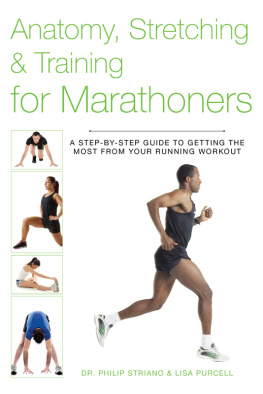
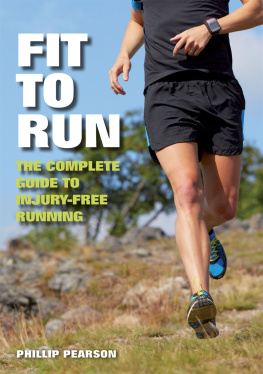
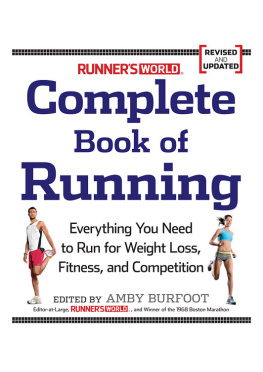
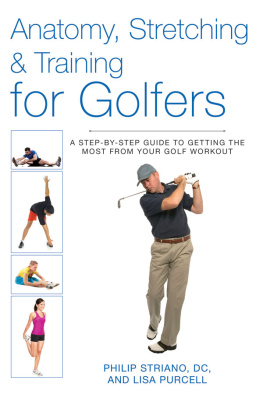

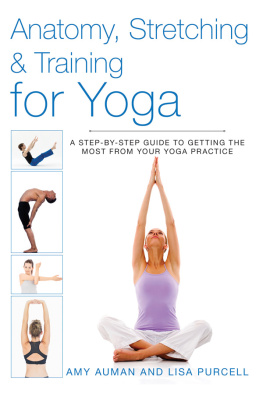
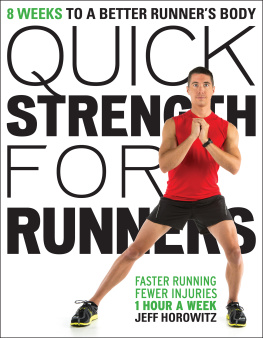
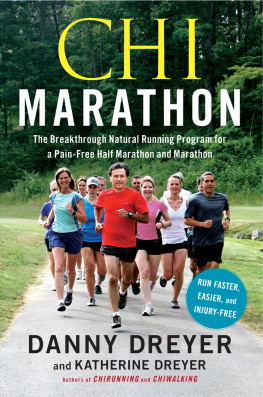

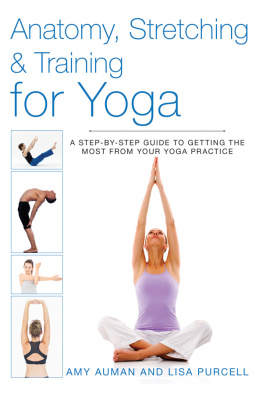
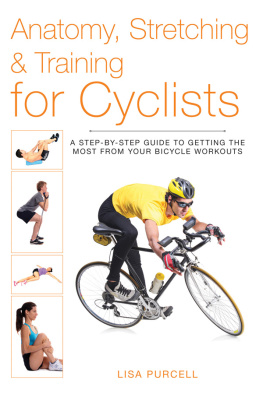
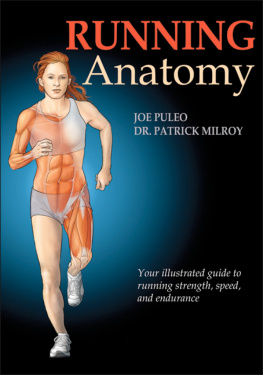
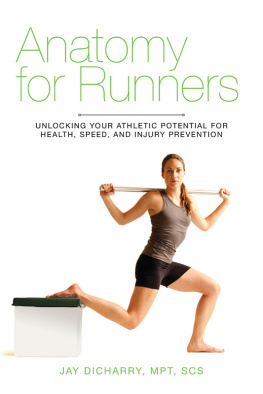


 INTRODUCTION: WHY RUN A MARATHON? R unning and jogging are among the most popular recreational sports in the world. And thousands of competitors from around the globe sign up for marathons every year.
INTRODUCTION: WHY RUN A MARATHON? R unning and jogging are among the most popular recreational sports in the world. And thousands of competitors from around the globe sign up for marathons every year. Burns calories Running burns about 100 calories per hour (the more you weigh, the more calories youll burn), so weight loss is a prime incentive for many beginner runners, and weight maintenance for those who run regularly.
Burns calories Running burns about 100 calories per hour (the more you weigh, the more calories youll burn), so weight loss is a prime incentive for many beginner runners, and weight maintenance for those who run regularly. Warming up and cooling down To get the most from your run, take the time to warm up before you set out and cool down when you stop. Proper stretching can lead to better performance, and you should make it a key component of both your pre-run warm-up routine and your post-run cool-down.
Warming up and cooling down To get the most from your run, take the time to warm up before you set out and cool down when you stop. Proper stretching can lead to better performance, and you should make it a key component of both your pre-run warm-up routine and your post-run cool-down.